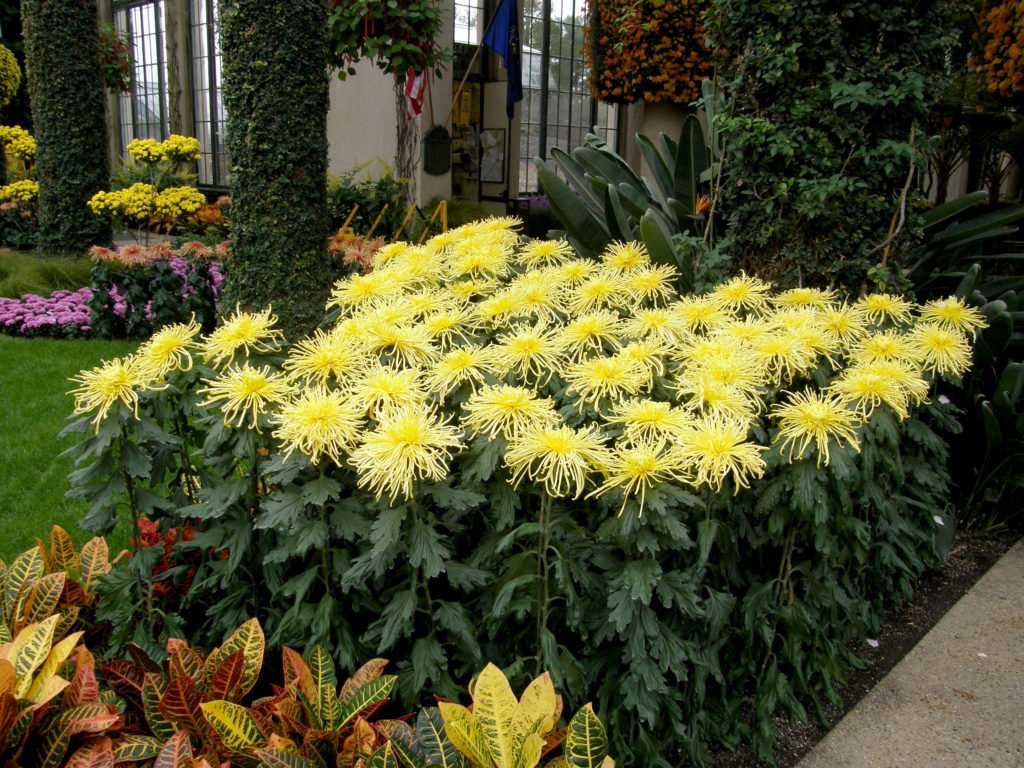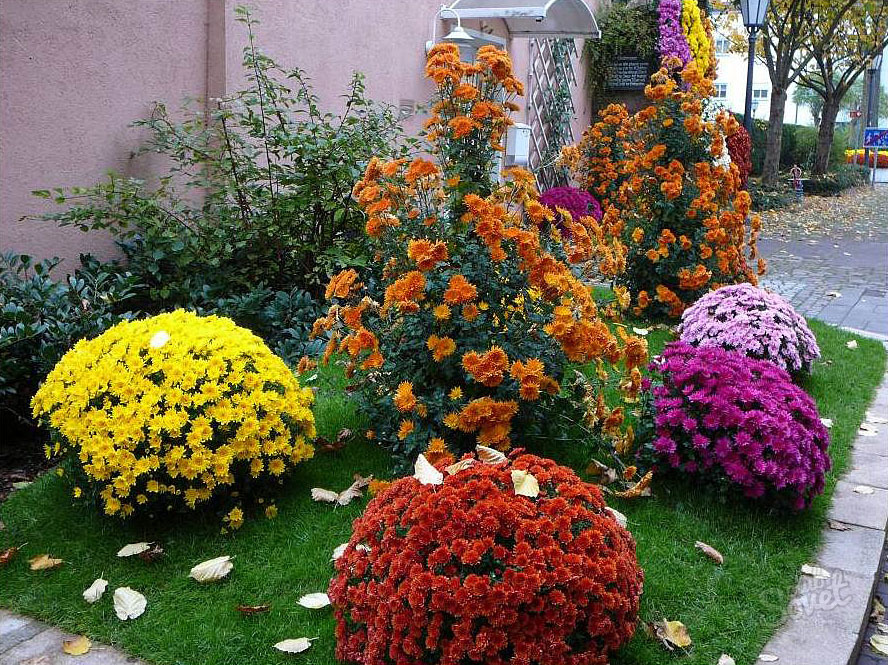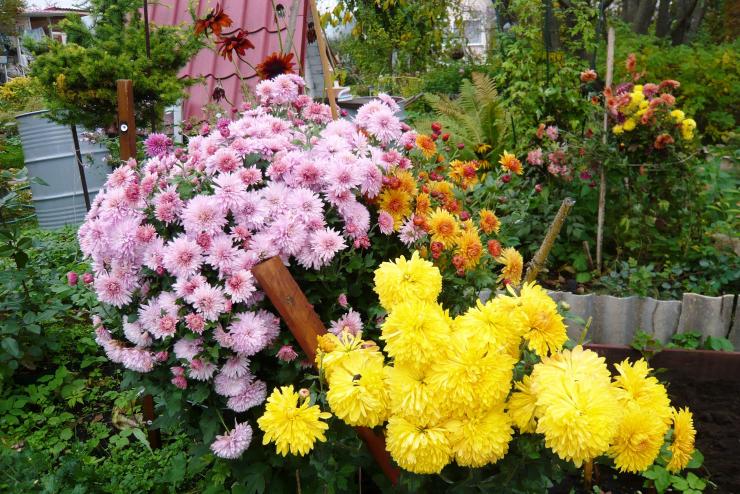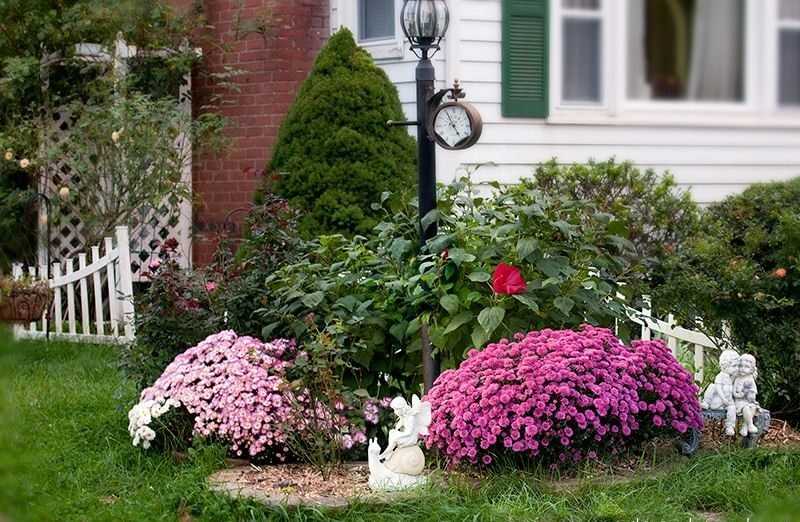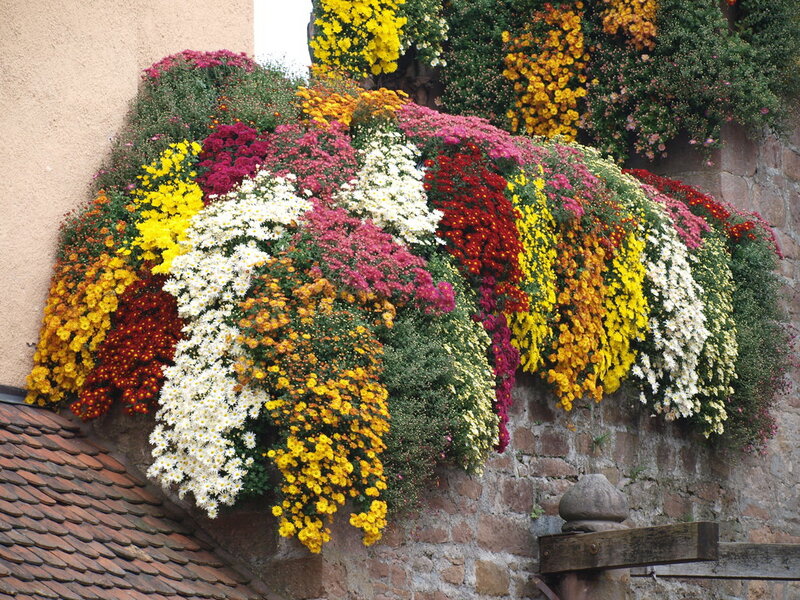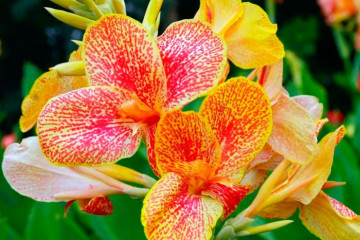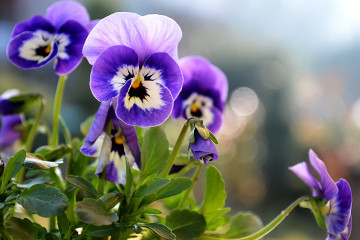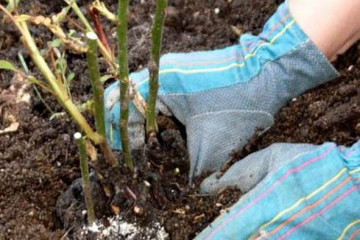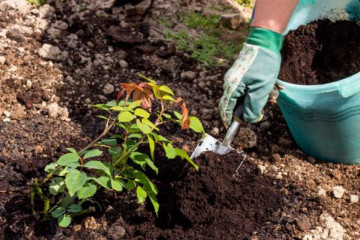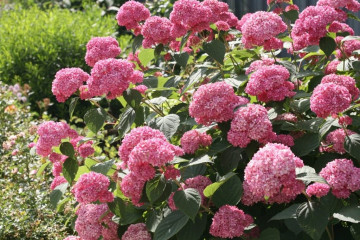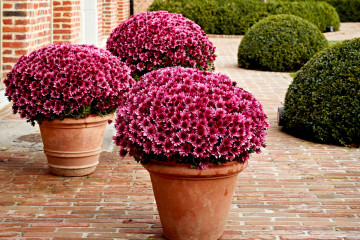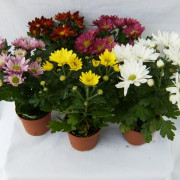Planting chrysanthemums in the open ground in spring
Content:
Chrysanthemums are one of the most popular plants among domestic flower growers. They can often be found in summer cottages. However, this flower is quite moody and requires attention. The most important care measure is planting. If you follow all the rules, the plant easily adapts to the environment and will delight you with lush flowering for a long time. If you ignore some important recommendations, a young plant can wither or even die.
Selection of seedlings
Planting chrysanthemums in the open ground in spring is a very important and responsible event, you need to prepare for it in advance. First of all, you need to choose the right planting material.
When purchasing seedlings on the market, on the Internet or in a specialized nursery, you need to keep in mind the following:
- It is better to choose a perennial variety so that you do not have to bury the flower before winter;
- The roots must be strong, overgrown;
- If there are young branches around the central shoot, the flower adapts well to new conditions and will develop rapidly;
- It is recommended to plant flowers during the entire warm period (April - August), then the shoots will quickly take root and winter safely.
The planting material should be free from signs of fungus, viral or bacterial infections. Any traces of the disease significantly reduce the likelihood of flower rooting and successful wintering. It is necessary to prepare the place and soil for planting in advance. Experienced flower growers think about this even before spring. It is known that the feathery and bristly varieties of the plant take root best and fastest. They tolerate adverse environmental influences well and successfully winter even with short severe frosts.
Chrysanthemums after winter, beginning of growth
This usually occurs in the third decade of April - the second decade of May. However, the timing may vary slightly, depending on the specific region. At this time, the flowers begin to actively stretch upward. The end of April is an ideal time for plant propagation by cuttings.
This procedure should be carried out as follows:
- A uterine bush is selected to obtain "babies". It should be the healthiest and strongest plant that has passed the winter without any complications;
- Cuttings 9-10 cm long are cut with a sharp knife. Each of them should have three knots;
- The shoots are placed in wooden boxes intended for growing seedlings and filled with a nutrient mixture of perlite and river sand;
- The soil is slightly moistened, but you do not need to pour a lot of water;
- Further, young shoots are covered with plastic wrap.
The cuttings are kept "under the hood" until the first shoots appear on them. If they were planted at the end of March, the roots will appear in about 20 days, if in the middle (end) of April - a little earlier, after 14-15 days. The soil inside the "cap" should be a little moist all the time, but it is not worth "pouring" the cuttings too much, otherwise they will rot and will not be able to take root.
Planting chrysanthemums in the spring by dividing the bush
Every florist knows when to plant chrysanthemums. The most convenient and easiest way to do this is in the spring, when the plants emerge from the period of physiological dormancy.You can also grow flowers from seed, but such sowing is long and troublesome. In addition, seeds purchased from the market are often of poor quality. Propagation by cuttings is more reliable. If the weather is unstable, it is better to wait until the last ten days of April - the first ten days of May.
Correct step-by-step instructions for breeding:
- Choose a healthy and strong uterine bush, not affected by pests and parasites, not suffering from fungus and normally developing;
- Dig up the plant;
- Using a sharpened knife, divide it into several parts. Each fragment should have its own root and young shoots;
- Layers are planted in pre-prepared pits filled with a complex mineral fertilizer and nutrient mixture.
Young shoots are watered abundantly. It is possible to plant chrysanthemums in this way in the fall, but in this case, young shoots need careful shelter for the winter. For this purpose, it is best to use oak branches or spruce branches.
It is known that at least 6 cuttings can be obtained from a normally developing bush 3 years old, most often 4-5 cuttings. The older the plant, the more side shoots it has. However, you should not choose the oldest bushes, because they are more likely to be infected with infections or parasites.
How to plant chrysanthemums
Chrysanthemums can be planted in spring or autumn. To do this, you need a shallow box, because the roots of the plant lie almost on the surface. If the flower is purchased in the fall, do not immediately place it in open ground, otherwise it will die with the first night frosts. You need to leave the plant at home until spring so that it gains strength.
With the onset of warming, you can safely proceed with the transplant. First you need to prepare the flower for a change in conditions.
This requires:
- Wait for the chrysanthemum to completely bloom;
- Prune, remove dried flowers and deformed leaves;
- Wrap the container with a thick layer of textiles to avoid premature sprouting;
- Place the pot in a cool, dark place for the winter.
Watering during wintering should be minimal. If the soil is only slightly moist, this is quite enough, because in the cold season the chrysanthemum is at rest.
As soon as spring comes, the flower is moved closer to warmth and light. When the frost is finally over, you can plant young shoots in open ground at the dacha. Seven days after planting, it is necessary to apply a mineral dressing containing a high concentration of nitrogen.
Where to plant chrysanthemums
Almost all growers know how to grow chrysanthemums and how to plant them in the garden. However, few people think about the landing rules. The main thing is to provide the plant with at least three hours of sunshine daily, so a shaded area is not the best option for planting. The place should be open on all sides.
Do not choose areas for planting with dry peaty or sandy soil, poor in minerals. Another requirement for the earth is good moisture retention. At the same time, the water should not stagnate.
The plant will thrive best if placed on light sandy soils. If the land is rich in organic matter and humus, the chrysanthemum will take root well and will delight you with its lush flowering for a long time. Also, the soil should be well drained.
Experts do not recommend planting these flowers for more than two or three years in a row in the same area - because of this, problems such as degeneration of the variety, defeat by viral and fungal infections, and invasion of parasites can occur.
If chrysanthemums are planted in soil that is poor in nutrients, you can save the situation with regular feeding.It is much more difficult to solve the problem of wintering (most varieties do not tolerate even the smallest frosts). In the case of high soil moisture, watering must be reduced, this will prevent root rotting.
At what distance to plant chrysanthemums
You need to know not only when to plant chrysanthemums in the spring in open ground, but also how far to plant them. These flowers love space, do not like crowding. The minimum distance between two young plants, planted in open ground in one strip, should be 30 cm, the maximum - 50. The more, the better. Each stalk is sprinkled with plenty of earth. The roots should lie practically on the surface; they should not be deepened too much into the ground.
Small, compact seedlings do not need additional support. However, next to large spreading specimens, it is recommended to install wooden or metal posts. This will help the stem to reach upward and not bend over from the wind and rain.
After the cuttings are planted, each piece is pinched. This is necessary in order to remove the growth point. The final stage of work is watering and artificial shading, for this you can use any covering material.
The depth of the chrysanthemum pit should be on average 35-45 cm, no more. A drainage layer should be laid on the bottom, as well as a nutrient mixture consisting of soil and vermicompost. This will help the flowers take root faster and get all the nutrients they need.
Top dressing in spring for lush flowering
For lush flowering in the climate of the Moscow region, plants need enhanced feeding.
Chrysanthemum most of all needs the following substances:
- Nitrogen (needed for proper leaf development);
- Potassium - stimulates active root growth;
- Phosphorus - increases the immunity of chrysanthemums to diseases, pests and parasites. Also, phosphorus is needed in order to increase the number of buds;
- Copper and zinc - for the formation of green mass.
It is known that the plant's need for certain minerals depends on the variety. If the bush is tall, you should often feed it with nitrogen fertilizers. For compact varieties of small growth, potash fertilizers are more important.
A good result is given by the introduction of humus and organic fertilizers, made independently from weed residues. In the spring, it is imperative to add manure or poultry droppings. Before applying any fertilizer to the ground, it is necessary to thoroughly water and loosen the soil. This is necessary for the intensive and rapid absorption of nutrients.
To increase the duration of flowering and speed up the process of setting buds, industrial stimulants should be used. Which one to choose depends on the grower. The "Bud" remedy is very popular.
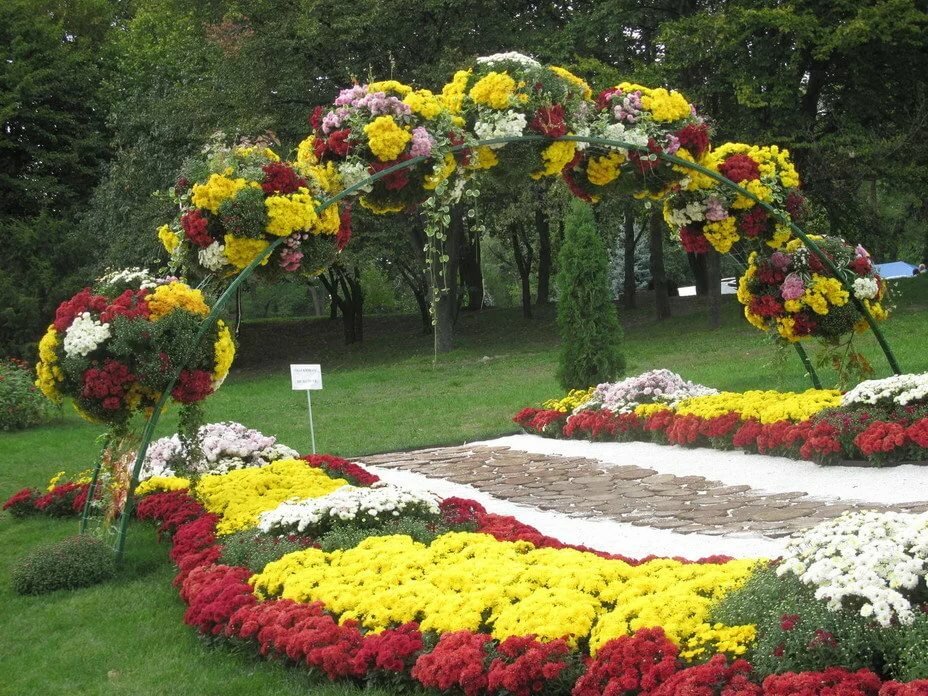
If the soil is poor in nutrients, it is unlikely that it will be possible to wait for a lush flowering.
You should think in advance about how to feed chrysanthemums in the garden for lush flowering in the spring. For this, flower growers begin to stock up on complex mineral fertilizers even in winter. Chrysanthemums should be fed to novice growers responsibly, in no case exceeding the recommended dose of fertilizer. You also need to know how to fertilize chrysanthemums - not all types of dressings are suitable.
For feeding, it is imperative to use nitrogen, phosphorus and potash fertilizers. Nitrogen accumulates in small tubers on the roots of the plant and contributes to the active collection of green mass. A good result is obtained by the industrial preparation "Kemira", its updated version - "Kemira +". To apply top dressing, the mixture must be diluted with water, strictly observing the proportions indicated on the package, the diagram and detailed recommendations.The drug "Kemira" stimulates the growth of chrysanthemums, flowering and bud setting. Flowers appear large, even, without deformations. A powerful agent is Multiflor, which guarantees long flowering and helps to bloom faster. You can also use a time-tested folk remedy - an infusion of garden weeds.
Chrysanthemum care in spring
The main activity for caring for chrysanthemums in the spring, when they enter the season of active growth, is abundant watering followed by loosening. The recommended frequency of soil moistening is once a week in spring and twice a week in summer. It is also necessary to carry out pruning in a timely manner for the correct formation of the crown. Top dressing of annual specimens is carried out two or three times during the entire season. If the plants are already several years old, fertilization continues in summer and autumn, until the moment when the flower goes to winter. If there are any signs of pest infestation, parasites should be sprayed with industrial insecticides or collected by hand.
When caring for chrysanthemums, great attention should be paid to watering and regular feeding. Spring can be considered the most responsible time in the gardener's calendar, it is at this time that the plant spends its energy most intensively. For the prevention of diseases, pests and parasites, it is necessary to provide the flowers with suitable conditions, proper spring care, good wintering and good nutrition. Then you will certainly be able to grow the most beautiful flower.
